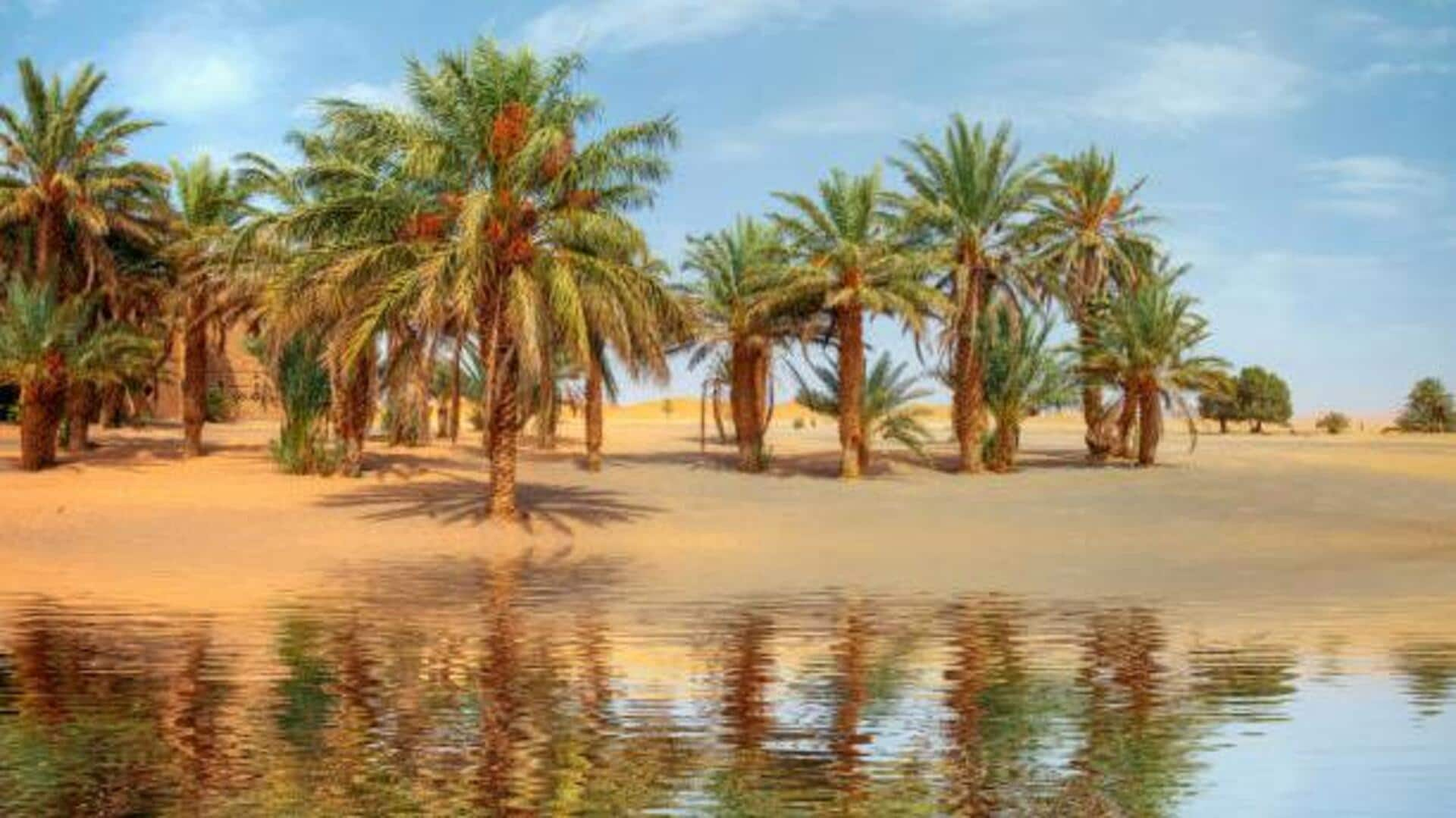
World's most beautiful desert oases to explore
What's the story
Desert oases are unexpected havens of life and greenery amid vast stretches of arid landscapes.
These natural wonders provide essential resources for both wildlife and humans, offering a stark contrast to their surrounding environments.
Found in various parts of the world, each oasis has its unique characteristics and ecosystems.
Exploring these oases can offer insights into how life adapts to extreme conditions and the importance of water in sustaining biodiversity.
Siwa
The enigmatic Siwa Oasis
Located in Egypt's Western Desert, Siwa Oasis is famous for its rich history and cultural significance. Home to ancient ruins, including the Temple of Amun, it draws historians and tourists alike.
The oasis sustains diverse plant species, such as date palms and olive trees, feeding local communities.
Its natural springs are critical for agriculture, making it an invaluable resource in this harsh desert region.
Al-Hasa
The lush Al-Hasa Oasis
Saudi Arabia's Al-Hasa Oasis is among the largest oases in the world, spanning over 30,000 acres.
The oasis has more than two million palm trees, which yield dates that are exported across the globe.
Its massive irrigation system allows for agriculture despite the surrounding desert.
The historical significance of Al-Hasa comes from its place on UNESCO's World Heritage list for its cultural landmarks.
Huacachina
The unique Huacachina Oasis
The Huacachina Oasis in Peru is a postcard-perfect destination where a small lagoon is surrounded by sand dunes.
The oasis has become a favorite among tourists because of activities such as sandboarding and dune buggy rides.
Although it lies near one of the driest places on our planet, Huacachina lives on to show how tourism can help local economies and retain natural beauty.
Ubari Lakes
The serene Ubari Lakes
Located in Libya's Sahara Desert are the Ubari Lakes—saltwater lakes hidden between soaring sand dunes.
The lakes offer important habitats for migratory birds in some seasons, as well as watering holes for wildlife residing in this region.
While some lakes have dried up over the years due to climate change effects/human activity-related issues (like groundwater extraction practices affecting their sustainability levels negatively), others remain important ecological features worth exploring further today.